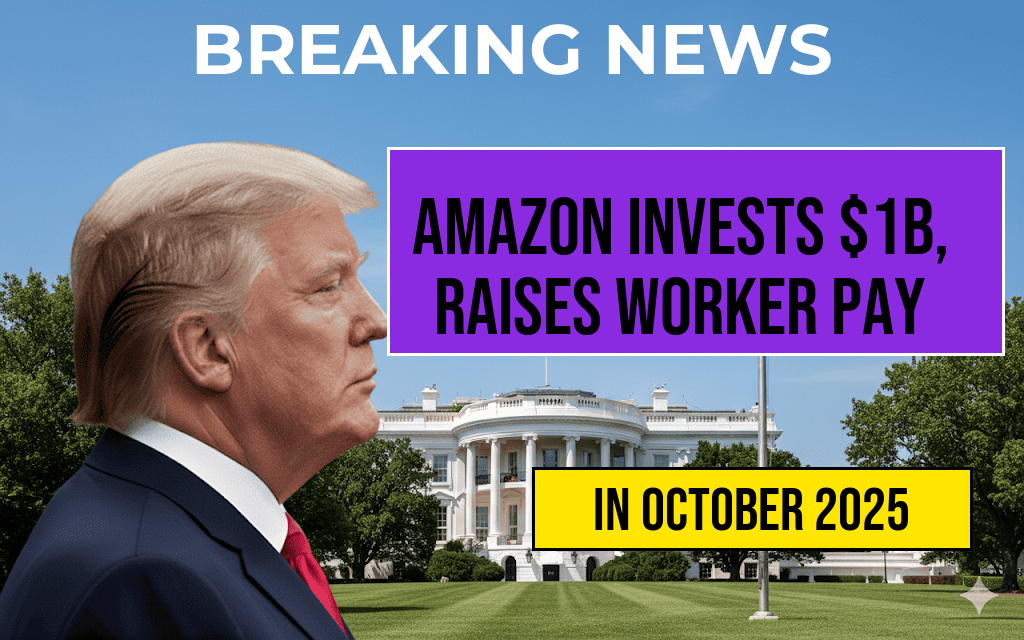Amazon has announced a significant $1 billion investment aimed at increasing wages and improving working conditions for its fulfillment center employees across the United States. This strategic move has already resulted in a notable rise in the average pay for fulfillment workers, pushing it above $23 per hour. The initiative reflects Amazon’s ongoing efforts to address labor market challenges and enhance its reputation among workers and regulators alike. With this substantial financial commitment, the company aims to attract and retain talent in a highly competitive logistics industry, where warehouse jobs have become increasingly vital to the national economy. The wage increase not only benefits thousands of fulfillment employees but also signals a broader shift within Amazon’s operational policies, emphasizing higher compensation as a core component of its growth strategy.
Impact on Fulfillment Workforce and Industry Standards
Rising wages and improved benefits
Since the announcement, data indicate that the average hourly pay for Amazon fulfillment workers has exceeded $23, marking a significant boost from previous levels. This increase aligns with Amazon’s broader efforts to improve employee satisfaction and reduce turnover rates, which have historically been high in warehouse jobs. The pay hike is complemented by additional benefits, including increased paid time off, enhanced health coverage, and opportunities for career advancement within the company.
Industry analysts suggest that Amazon’s wage increase could set a new benchmark in the logistics sector, where labor costs are a critical factor for competitiveness. According to data from the Wikipedia page on logistics, the cost of labor often influences shipping rates and overall supply chain efficiency. Amazon’s move could prompt other e-commerce giants and logistics providers to reevaluate their compensation packages, fostering a potential ripple effect across the industry.
Details of the $1 Billion Investment
Allocation and targeted outcomes
| Focus Area | Investment Details | Expected Outcomes |
|---|---|---|
| Wage Increases | Incremental raises to reach an average of $23+ per hour | Attract and retain a stable workforce |
| Benefits Enhancement | Expanded health plans, paid leave, and retirement options | Improve employee well-being and satisfaction |
| Training & Development | Funds allocated for skills training and upskilling programs | Reduce skill gaps and promote internal mobility |
| Work Environment Improvements | Investments in safety measures and ergonomic equipment | Reduce workplace injuries and improve productivity |
This multi-faceted approach demonstrates Amazon’s commitment to addressing worker concerns while maintaining its operational efficiency. The company has also pledged to monitor and adjust wages regularly to reflect inflation and regional labor market conditions.
Reactions and Broader Implications
Employee perspectives and industry response
Fulfillment workers have expressed a mix of optimism and cautious hope regarding the wage increases. Many report feeling more valued and financially stable, especially as the cost of living continues to rise in major cities. Union advocates and labor rights groups have welcomed Amazon’s investment, viewing it as a step toward better working conditions in the logistics sector.
However, some critics argue that wage hikes alone may not address underlying issues such as workplace safety and workload management. Labor unions continue to push for collective bargaining rights at Amazon facilities, emphasizing that sustainable improvements require ongoing dialogue and worker representation.
Market competitiveness and future outlook
Amazon’s decision to allocate substantial funds toward employee compensation underscores the company’s recognition of the critical role fulfillment center workers play in its global supply chain. By elevating wages, Amazon aims to reduce turnover, improve service levels, and enhance its brand image amid increasing scrutiny from regulators and policymakers.
As other retailers and logistics firms observe Amazon’s strategic shift, competitive dynamics within the industry may evolve, potentially leading to a broader elevation of wages and benefits across the sector. This could accelerate efforts to modernize warehouse operations, improve worker safety, and implement more equitable labor practices.
Additional Resources
Frequently Asked Questions
What is the main purpose of Amazon’s one billion dollar investment?
The main purpose of Amazon’s one billion dollar investment is to boost earnings for its fulfillment workers and improve overall working conditions across its facilities.
How has Amazon’s investment affected the average pay of fulfillment workers?
As a result of the investment, the average pay for fulfillment workers has increased to over twenty-three dollars per hour.
Which areas or departments are primarily impacted by Amazon’s increased pay initiative?
The fulfillment centers and related logistics departments are primarily impacted by the pay increases resulting from Amazon’s recent investment.
What are the expected benefits of this investment for Amazon and its workers?
This investment aims to attract and retain skilled fulfillment workers, improve worker satisfaction, and enhance operational efficiency.
Will this investment influence Amazon’s future compensation policies?
Yes, the significant investment signals Amazon’s intention to continue improving compensation policies and support its workforce in the future.

Leave a Reply